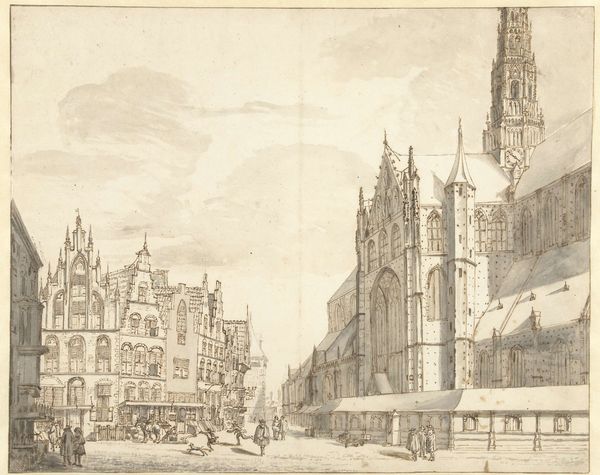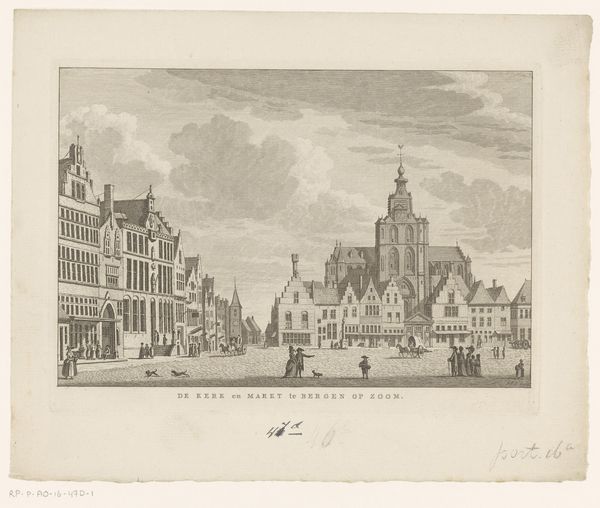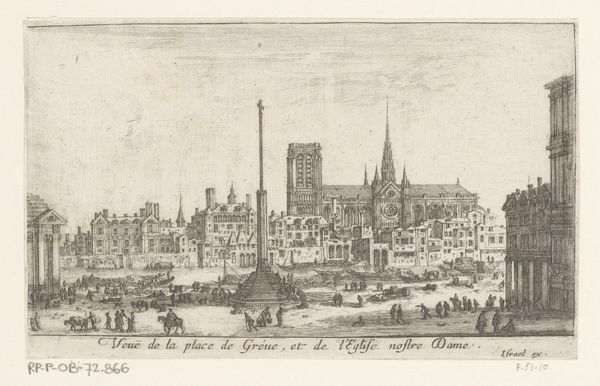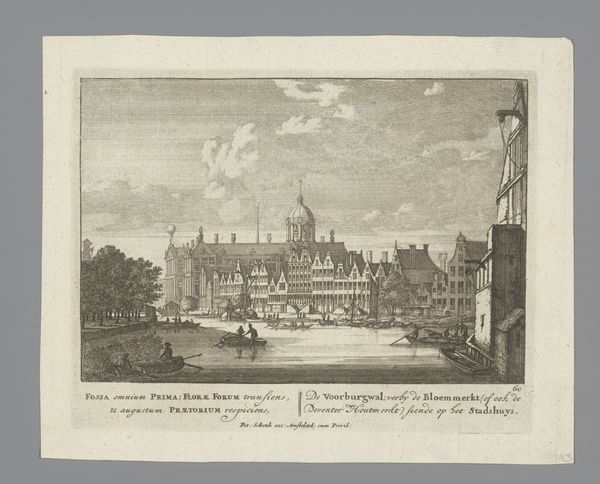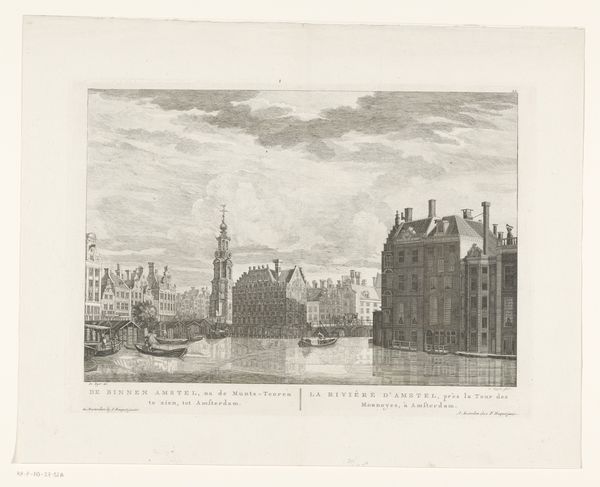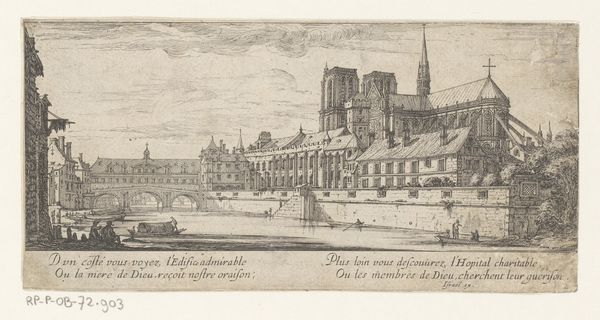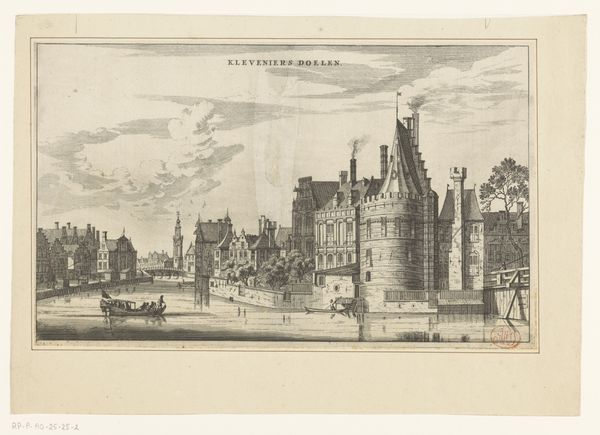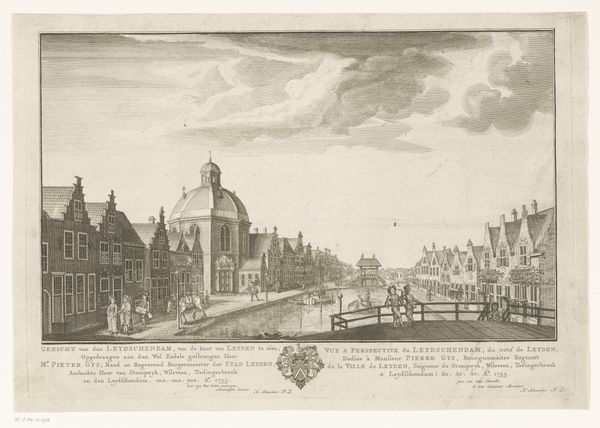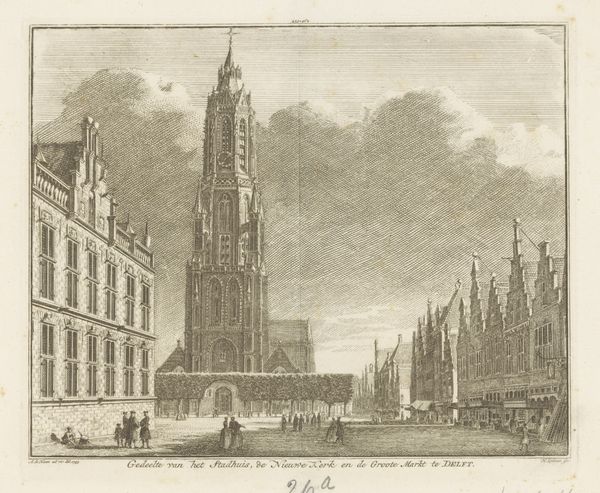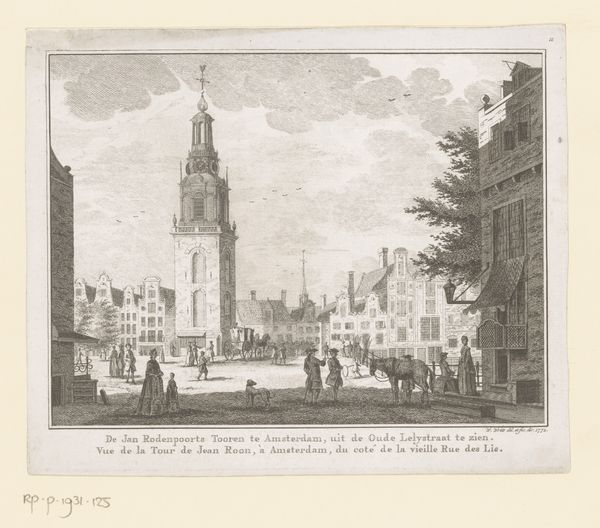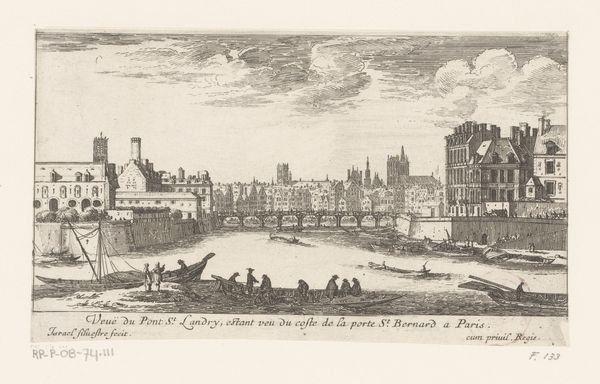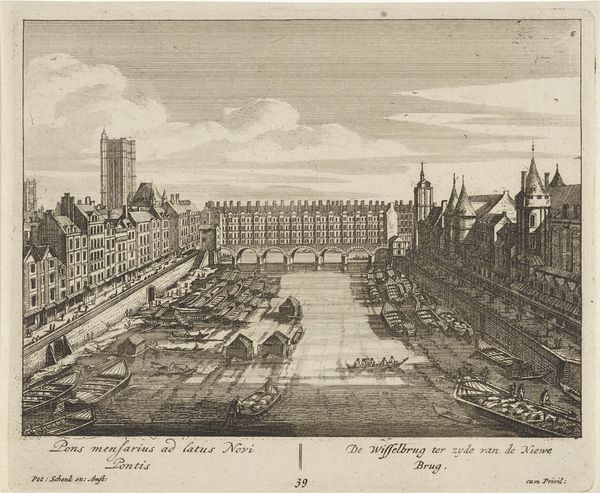
Dimensions: height 301 mm, width 390 mm
Copyright: Rijks Museum: Open Domain
Curator: This print captures Delft's marketplace around 1765, titled "Gezicht op de Markt, de Nieuwe Kerk en het stadhuis te Delft"—"View of the Market, the New Church, and the Town Hall in Delft." It's an etching and engraving on paper. Editor: The first thing I notice is the sheer scale and bustling activity. You immediately get a sense of everyday life in 18th-century Delft. Curator: Precisely. It gives us insights into urban development and the performance of civic life. The placement of the New Church and the Town Hall underscores their roles as central institutions in the community. It projects power but also accessibility. Editor: The composition highlights not just the grandeur of these structures, but also the vendors, shoppers, and what appears to be ordinary citizens congregating. There’s also a tension with the asymmetrical composition of the buildings with their different heights, suggesting a social hierarchy at play. Curator: Definitely, but the cityscape also adopts conventions from Baroque landscape painting. Look at the dramatic clouds, meant to ennoble an otherwise very local view. Prints such as this circulated widely. We must consider this imagery shaped ideas about Delft. It perhaps also advertised civic pride and promoted it beyond the locality. Editor: Good point! This also raises questions about who had access to these prints and how they would have interpreted such visual propaganda. Who is being included in these narratives, and who is missing or deliberately erased? I wonder how accurately this depicts everyday life. Is this a form of idealization? Curator: Of course, representation is always a negotiation. I do see this artwork offering invaluable insight into how early modern cities staged themselves for both internal and external audiences. It is also an important marker in the evolving role that imagery plays in the projection of power. Editor: For me, reflecting on who controls and influences these narratives is essential when looking at historical artwork like this. Understanding the socio-political influences helps create that crucial conversation that resonates even today.
Comments
No comments
Be the first to comment and join the conversation on the ultimate creative platform.
